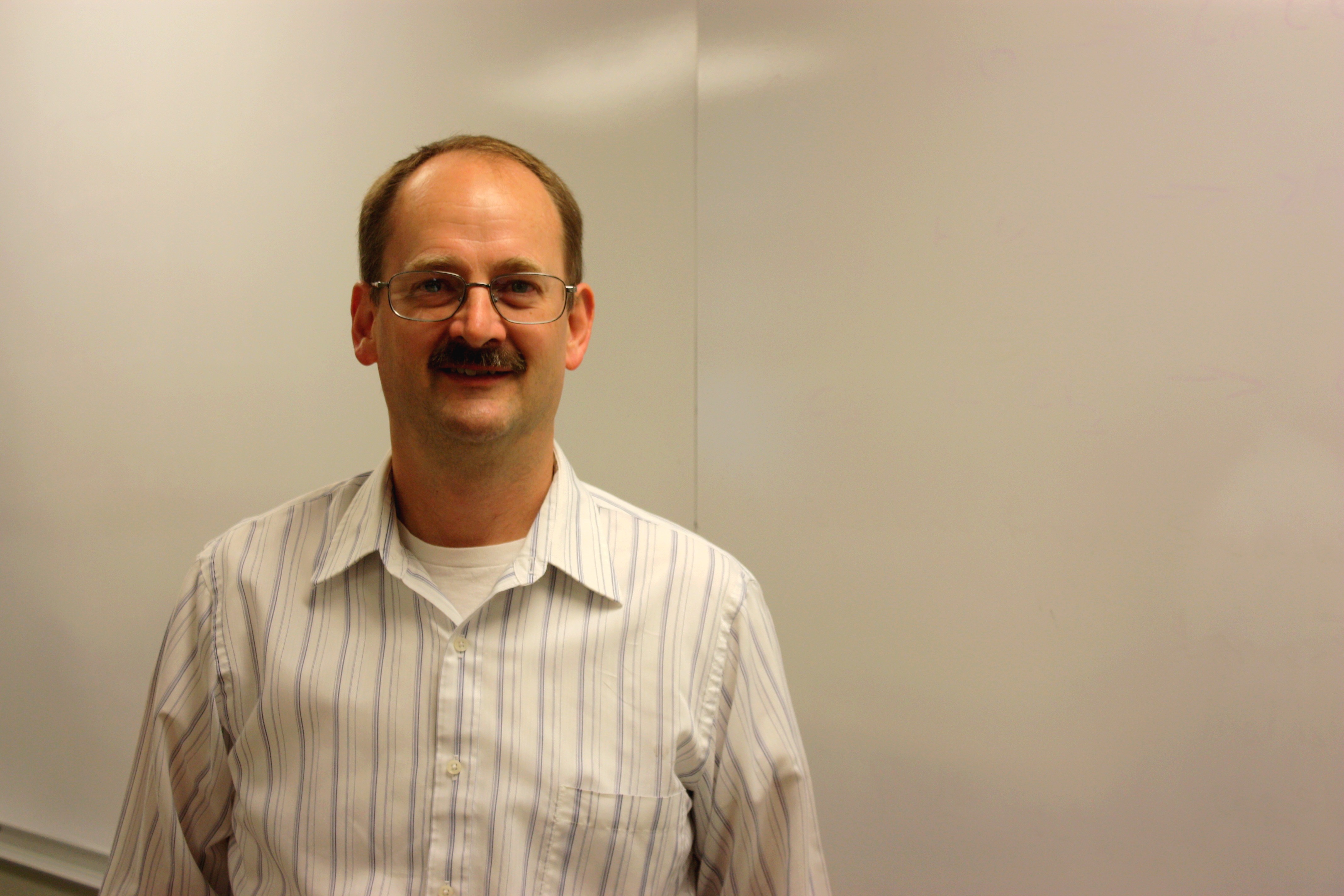“So you’re a scientist?” are a combination of words Dan Smith, professor of chemistry at Goshen College, hates to hear because what follows is a question that has no answer. This is also a question that sparked his interest in researching pigeon coloring.
As a child he would catch pigeons in a barn near his home in New Holland, Pennsylvania. The farmer said that he could keep any pigeons he caught to breed.He got involved in chemistry due to his love of science and father who was his high school physics teacher. He said, “I couldn’t do physics because I’d be a chip off the old block. If I said hi to him in school people snickered. If I said nothing people snickered.” He went on to say that he was much better at chemistry anyway so that’s what he wanted to do.
He received his undergraduate degree from Elizabethtown College in Pennsylvania, his masters from Bucknell in Pennsylvania and his doctorate from Iowa State University. He came to learn about Goshen College from some alumni in Austin, Texas while doing his post-doctorate. “I knew I wanted to teach at a small, Christian institution and Goshen had an opening.”
Soon after Dr. Smith arrived in Goshen, he learned from the father of a friend about a homing pigeon racing club in Mishawaka. He eagerly joined and was given some pigeons to start with to breed.
On race day, all the pigeons are put into a basket, driven a long distance away, usually about 150-300 miles, and then released. The pigeon that made it home with the highest average velocity was the winner. The best Dr. Smith ever did was third.
He left the club after a time because it wasn’t a “Mennonite friendly” club. “There was a lot of sitting around, drinking beer and telling crude jokes. The kind I wouldn’t tell my class at the beginning of each class period.”
While he was still a member of the club he was asked, “So you’re a scientist? Is there a way to determine genetically which pigeons will home better?” At the time there wasn’t but that did make him think that there was a way to predict color.
He had no previous experience with genetics so most of what he learned was self-taught and from some biology professors here at Goshen College. He is able to conduct all his research here at the college having to only send some samples to a commercial facility to do sequencing.
To start, he takes a bird that he defines as the original bird as a baseline and another bird whose color he wants to manipulate and breeds them. He then takes a drop of their blood to get DNA from.
Through a process called polymerase chain reaction (PCR) he is able to isolate a particular string of DNA and multiply it and create hundreds of thousands of copies of that strand to be analyzed. RNA can also be obtained but is much harder to do because he has to pluck a feather out of the wing, wait for it to grow back halfway and then pluck it again to get a useable amount of RNA.
After getting the sequence analysis back from the lab he looks at it to see if correct gene was manipulated to change the color. If this correlation is off even once he must move on to another gene.
So far he has not been able to identify what gene causes color change but he believes he is close. “Even if the data we get back don’t tell us we’re right we can still use to tell which direction to move on the chromosome.” The “we” he refers to is two other professors that he is in current collaboration with across the country. Professor Mike Shapiro at the University of Utah and Professor John Fondon at the University of Texas, Arlington are the names of his collaborators.
Dr. Smith and Professor Fondon experienced their first publication recently in PLoS One which is an online science journal. Unfortunately, Smith said, all they were able to conclude is that the gene they thought was causing the coloring change is not what they thought.
So far they have not been able to definitively say what causes the coloring change but he thinks they are close. He hopes that with three people working together on the project they are able to come up with an answer one day. Until then he will continue his research and work with Professors Fondon and Shapiro.



